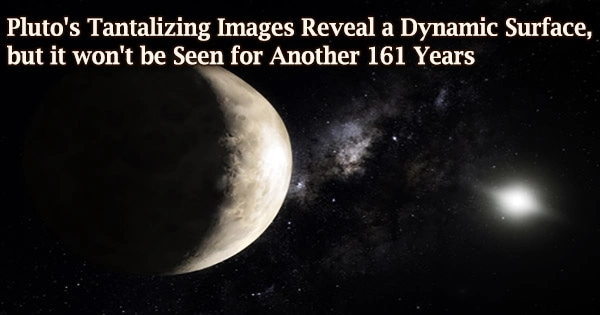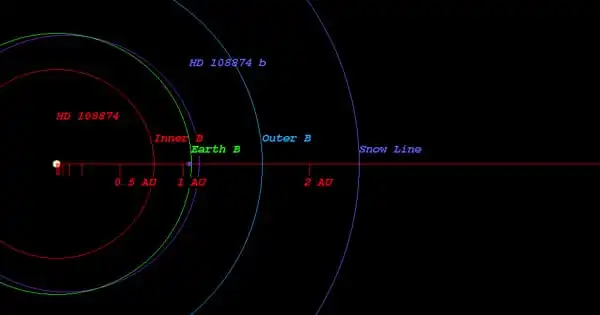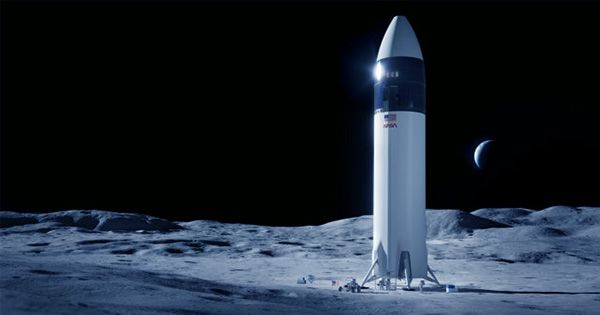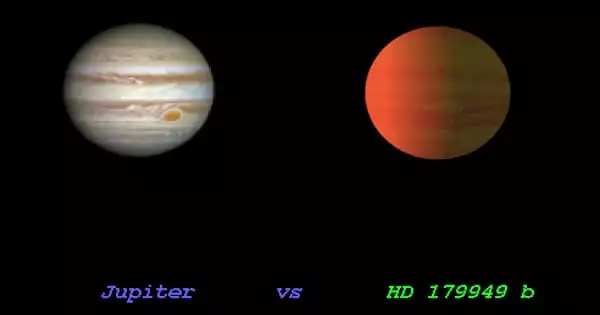In July 2018, the solar system aligned for a brief moment, allowing Earth to see Pluto’s fully illuminated disk, which will not happen again for 161 years. Pluto is a huge, far-flung member of the solar system that was once thought to be the solar system’s outermost and smallest planet.
Bonnie Buratti, a planetary scientist, had been waiting a decade for the chance to see the unusual sight in the hopes of closing a knowledge gap that even the meticulously prepared New Horizons mission couldn’t complete. The result is a perplexing light plot from Pluto and Charon, Pluto’s moon.
“We grasped this once-in-a-lifetime well it’s once in more than a lifetime, once in two centuries opportunity to see Pluto fully illuminated,” Buratti, who works at NASA’s Jet Propulsion Laboratory in California and is the lead author on a new paper presenting the observations, told Space.com.
Pluto is not visible to the naked eye in the night sky. Its largest moon, Charon, is so similar to Pluto in size that the two entities are often referred to as a twin system.
Scientists can measure the “opposition surge,” a sudden rise in the brightness of an object as it is fully lighted, disproportionate to the extra sliver of surface area being illuminated, by observing it at and around the instant of maximum illumination.
The pattern of the opposing surge, scientists believe, is impacted by the density of material on a world’s surface.
We saw Pluto and Charon separately for the first time since the encounter. It’s kind of emotional for me … Here’s a thing that was just a point of light, and then in a day or two it becomes this geologic world and you feel like you’re there. It’s an intimate thing. But then it goes back to being a point again.
Bonnie Buratti
“By looking at how much an object brightens when it gets full, you can tell something about the surface texture and what the surface is like is it fluffy? Is it snowy? Is it compact?” Buratti said.
For example, the opposition surge of the full moon is caused by the loose, dusty regolith at its surface, she said. “These particles cast shadows and those shadows rapidly disappear as the face becomes illuminated to the observer.”
Standing on Pluto’s surface, an observer would view the Sun as a bright star in the dark sky, giving Pluto with around 1/1,600 of the sunlight that reaches Earth. As a result, the surface temperature of Pluto is so low that ordinary gases like nitrogen and carbon monoxide exist as ices.
Because of the inclination of Pluto’s orbit compared to our own, catching a fully lit Pluto from Earth is impossible. The term “opposition” is used by skywatchers to describe the time of year when a certain solar system object appears in our skies opposing the sun.
However, a celestial body that is frequently above or below the plane of Earth’s orbit around the sun, such as Pluto, may not be completely lighted at that moment.
As a result, the 161-year wait for the next such opportunity, as well as Buratti’s foresight in seeing 2018 potential so far ahead of time. She and her colleagues scheduled time to use the Palomar Observatory’s 200-inch Hale telescope near San Diego. The Hale telescope has an optical system that allows it to distinguish between Pluto and Charon rather than seeing them as an one blob.
On July 12, 2018, as well as other days that month and in July 2019, the team was able to capture super-illuminated observations of Pluto. Buratti and her colleagues had planned to take more measurements last summer, but the COVID-19 outbreak forced the observatory to close.
Although the researchers are still not permitted to use the telescope in person, Buratti and her colleagues have scheduled observations for Saturday (June 19). She expects that these data, as well as others coming up next month and in October, will shed light on how Pluto’s opposition surge occurs, providing scientists with the information they need to figure out what’s going on on the ground to generate the visual effect.
Buratti said her suspicion is that the sharp opposition surge is related to how dynamic a world the New Horizons spacecraft discovered during its 2015 flyby.
“Pluto is much more active than we thought,” she said. “We saw stuff we never saw before there.”
It’s the first world in the solar system known to have glaciers, for example. Ices evaporate and refreeze, occasionally migrating between Pluto and Charon. There could be snow on it (Pluto), there could be a lot of frost on it, and it could have a very fluffy, textured surface.
Although the near proximity of the spacecraft flyby and Earth’s full illumination is purely coincidental, Buratti said the combination of observations is yet another illustration of how planetary research thrives when ground-based and space-based technologies are used in tandem.
She observed that New Horizons received night-side and halfway lighted views of Pluto during its movement, but that due to the direction of its brief flyby, it couldn’t see the fully illuminated disk.
“You combine it with these ground-based observations and you have the full thing, you have the full package,” she said. “These are totally complementary.”
The new data are also a heartbreaking reminder of Buratti’s own efforts during the New Horizons flyby because scientists rarely get to utilize equipment powerful enough to distinguish Pluto and Charon when watching the pair from Earth.
“We saw Pluto and Charon separately for the first time since the encounter,” Buratti said. “It’s kind of emotional for me … Here’s a thing that was just a point of light, and then in a day or two it becomes this geologic world and you feel like you’re there. It’s an intimate thing. But then it goes back to being a point again.”
The observations are described in a paper published June 8 in the journal Geophysical Research Letters.
















